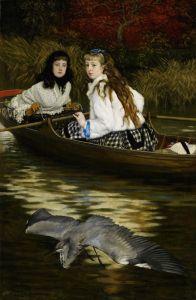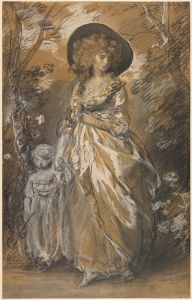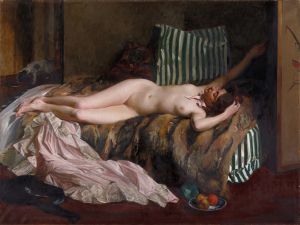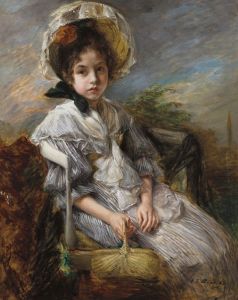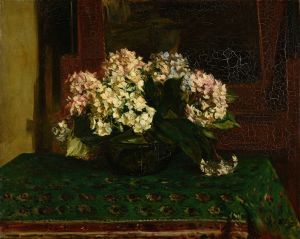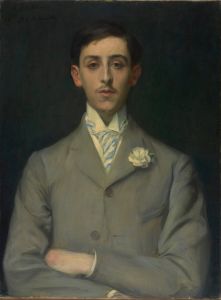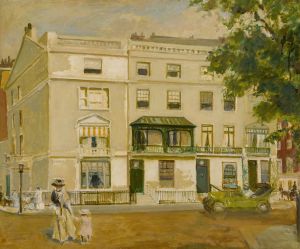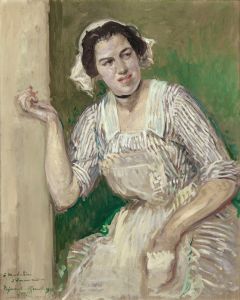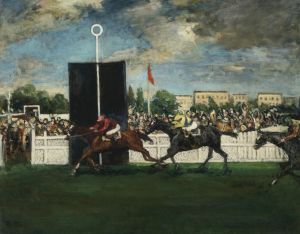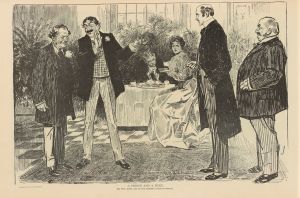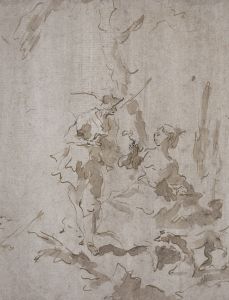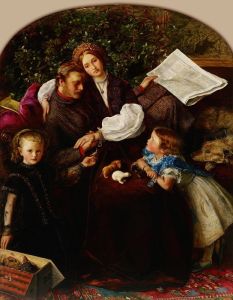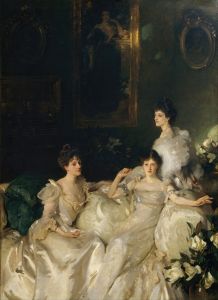
Portrait of a lady, traditionally identified as Ellen Millicent Cobden
A hand-painted replica of Jacques-Émile Blanche’s masterpiece Portrait of a lady, traditionally identified as Ellen Millicent Cobden, meticulously crafted by professional artists to capture the true essence of the original. Each piece is created with museum-quality canvas and rare mineral pigments, carefully painted by experienced artists with delicate brushstrokes and rich, layered colors to perfectly recreate the texture of the original artwork. Unlike machine-printed reproductions, this hand-painted version brings the painting to life, infused with the artist’s emotions and skill in every stroke. Whether for personal collection or home decoration, it instantly elevates the artistic atmosphere of any space.
Jacques-Émile Blanche was a prominent French artist known for his portraits of notable figures in the late 19th and early 20th centuries. One of his works, "Portrait of a Lady, Traditionally Identified as Ellen Millicent Cobden," exemplifies his skill in capturing the essence and character of his subjects. Blanche was born in Paris in 1861 into a family with artistic connections, which provided him with the opportunity to interact with many influential artists and intellectuals of his time. He was particularly known for his ability to portray the personalities of his sitters, often capturing their social status and personal nuances with great sensitivity.
The painting in question is traditionally identified as a portrait of Ellen Millicent Cobden, although there is limited information available to confirm this identification with absolute certainty. Ellen Millicent Cobden was the daughter of the famous British politician and free-trade advocate Richard Cobden. She was known for her own contributions to social causes and her involvement in the arts, which would have made her a fitting subject for Blanche, who often painted individuals from intellectual and artistic circles.
Blanche's style is characterized by a blend of Impressionist influences and a more traditional approach to portraiture. He was adept at using color and light to create a sense of immediacy and presence in his works. In "Portrait of a Lady," Blanche likely employed these techniques to convey the elegance and poise of the sitter, using a palette that highlights the textures of the clothing and the subtle expressions of the face.
The composition of the painting is typical of Blanche's portraiture, focusing closely on the sitter to engage the viewer directly with the subject. This approach allows the viewer to connect with the personality and mood of the individual portrayed. Blanche's attention to detail, particularly in the rendering of facial features and attire, demonstrates his commitment to capturing the likeness and spirit of his subjects.
While the exact date of the painting is not specified, it would have been created during the height of Blanche's career, when he was actively painting portraits of many notable figures across Europe. His works were well-received and exhibited in various prestigious venues, contributing to his reputation as one of the leading portraitists of his time.
Blanche's portraits, including this one, are valued not only for their artistic merit but also for their historical significance. They offer a glimpse into the lives and appearances of individuals who were influential in their respective fields, providing a visual record of the cultural and social milieu of the era.
In summary, "Portrait of a Lady, Traditionally Identified as Ellen Millicent Cobden" is a testament to Jacques-Émile Blanche's skill as a portrait artist. While the identification of the sitter remains traditional and not definitively confirmed, the painting itself remains an important work within Blanche's oeuvre, showcasing his ability to blend technical proficiency with a deep understanding of his subjects' personalities.





